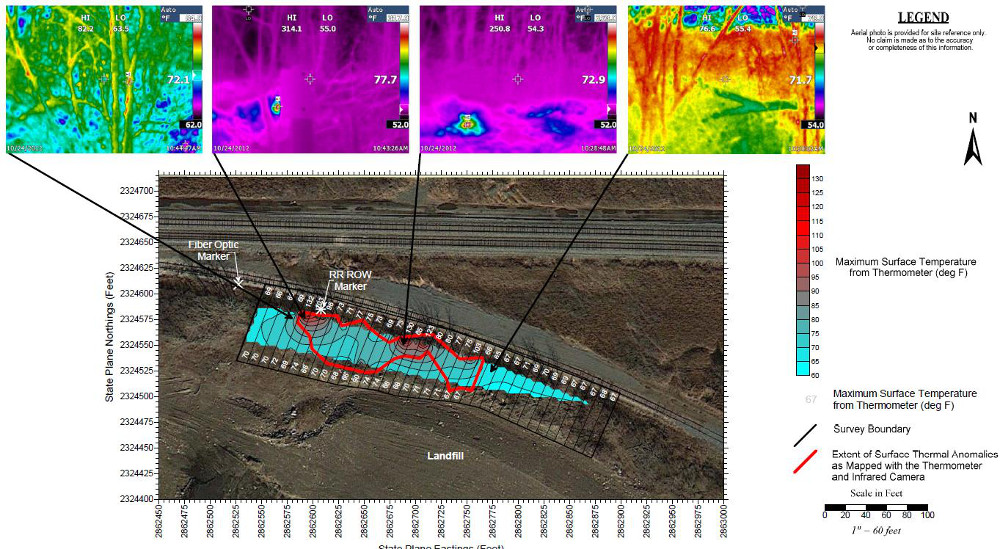Challenge
Recently, Mundell provided mapping services to an environmental consultant to delineate zones of high thermal activity along the northern boundary of an existing sloping landfill. At some point in the past, the northern portion of the landfill was used to dispose of organic debris. Overtime, microbial activities on the organic debris produced an exothermic reaction, thereby increasing the subsurface temperature. This temperature increase was sufficient enough to generate spontaneous combustion, and thus posed a potential hazard to the landfill.
Action
Mundell used an infrared thermometer combined with an infrared camera to provide temperature readings across the survey area. These two techniques used in conjugation allowed for delineation to be made on the zones responsible for the temperature increase, which were then subsequently removed.
Results
Despite the drastic topographic relief and dense vegetation of the survey area, the use of two thermal imaging devices allowed for an accurate delineation of surface thermal anomalies generated by the decaying organic debris. This investigation essentially reduced the size of the area in question by half.




